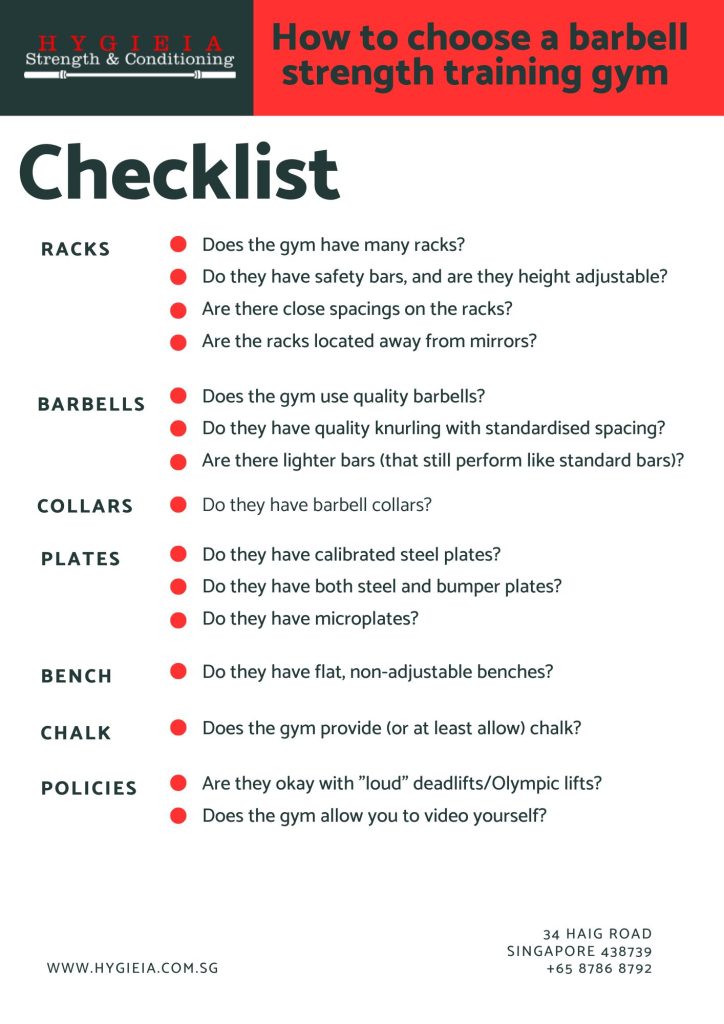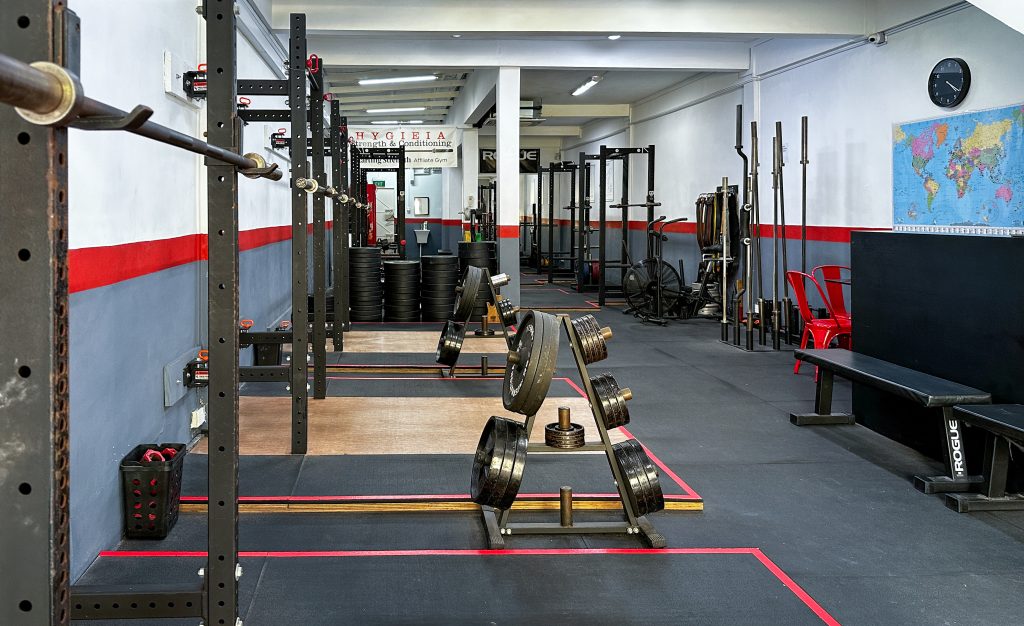
You know that strength is important, and barbells are the best way to get strong. What next? To get the best results, in-person coaching with a good barbell coach is the best option bar none. However, if there are no good barbell coaches around your area that you can regularly work with, the next best option best online coaching.
Regardless, you’ll still need a place to train. Sounds straightforward, right? Because don’t all gyms have pretty much the same stuff?
Not quite. Gym equipment may look similar on the surface, but can differ in subtle ways. You need to pay attention to these differences, if you’re serious about barbell training.
Let’s see why that’s the case.
Barbells get popular again
The barbell first appeared in the 1860s and is still being used to this very day, in more or less the same form. While its popularity has gone up and down, the past decade or so has seen a barbell renaissance. It started with the rise of Crossfit, and now the increased popularity of powerlifting, proves that there’s a big demand for barbell strength training facilities.
Fitness businesses have been popping up like mushrooms to cater to this demand. Incumbent big-box commercial gyms have also reacted accordingly, increasing their barbell strength training offerings.
Better gym equipment and experiences
Let’s talk about equipment. Back then, only a tiny handful of manufacturers made gym equipment. The quality wasn’t great, and poor customer service was par for the course.
When I first started going to the gym in ’04, there wasn’t much available. The only place you’d find proper barbell training equipment back in the day were small hole-in-the-wall gyms opened by lifters.
Try getting a decent rack, barbell and plates if you wanted to set up a home gym, or buy your own lifting shoes and belt – good luck. In a huge commercial gym, there would be a bazillion cardio machines, but only 1 or maybe 2 racks.
Sounds pathetic, but it wasn’t really an issue because hardly anyone else was using it. Occasionally, there’d be someone squatting in the rack, but otherwise, the racks were either empty or had someone doing bicep curls in it.
These days, there are way more high-quality barbell training equipment manufacturers. It’s become cheaper, easier to buy and easier to ship while getting better service.
Walk into any big commercial gym and you’ll find high-quality equipment that is actually being used. It’s a far cry from when I first started training.
So many gyms, how to choose?
With gyms (and equipment) everywhere, you have too many choices.
Join the chain gym with the sign-up discount? The place near your house because it’s convenient? The boutique gym your buddy recommended? Or the fancy-looking big box commercial gym with all the bells and whistles?
If you’re looking specifically for barbell training, how do you know if a gym is any good?
Putting aside factors like cost, location and the crowd, etc (which we’ll leave up to your judgement), this is how you identify a good barbell training gym:
Racks
How many racks does the gym have?
Obviously, the more the better. Is it a full or half rack? While both can work, the former is preferred.
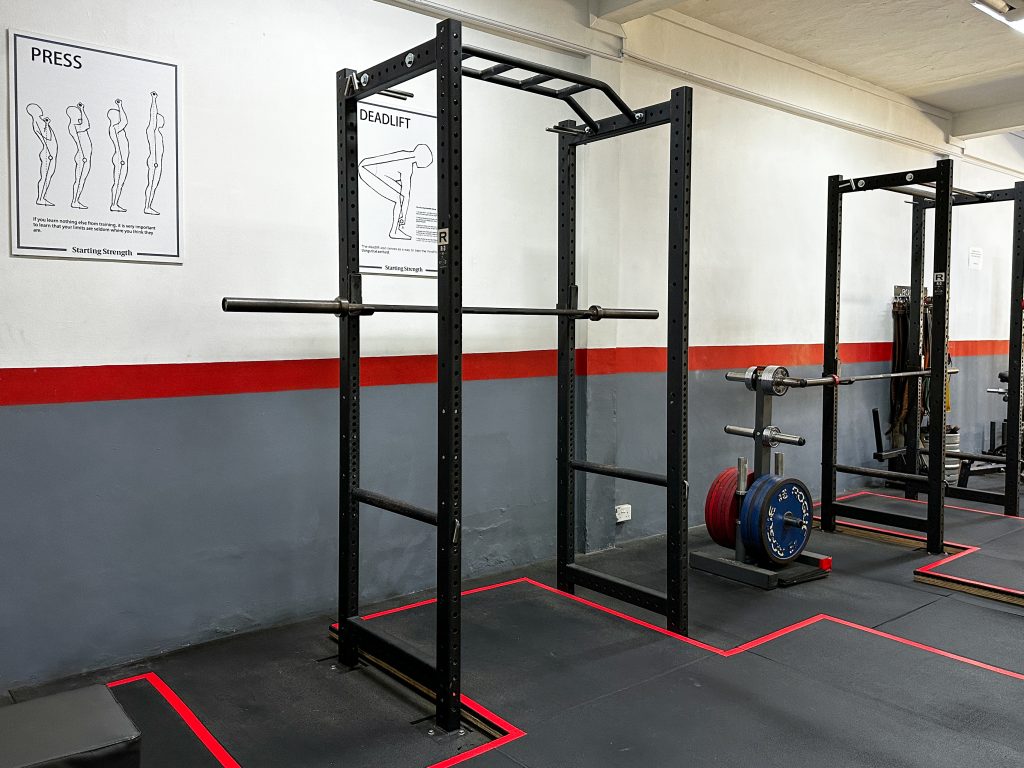
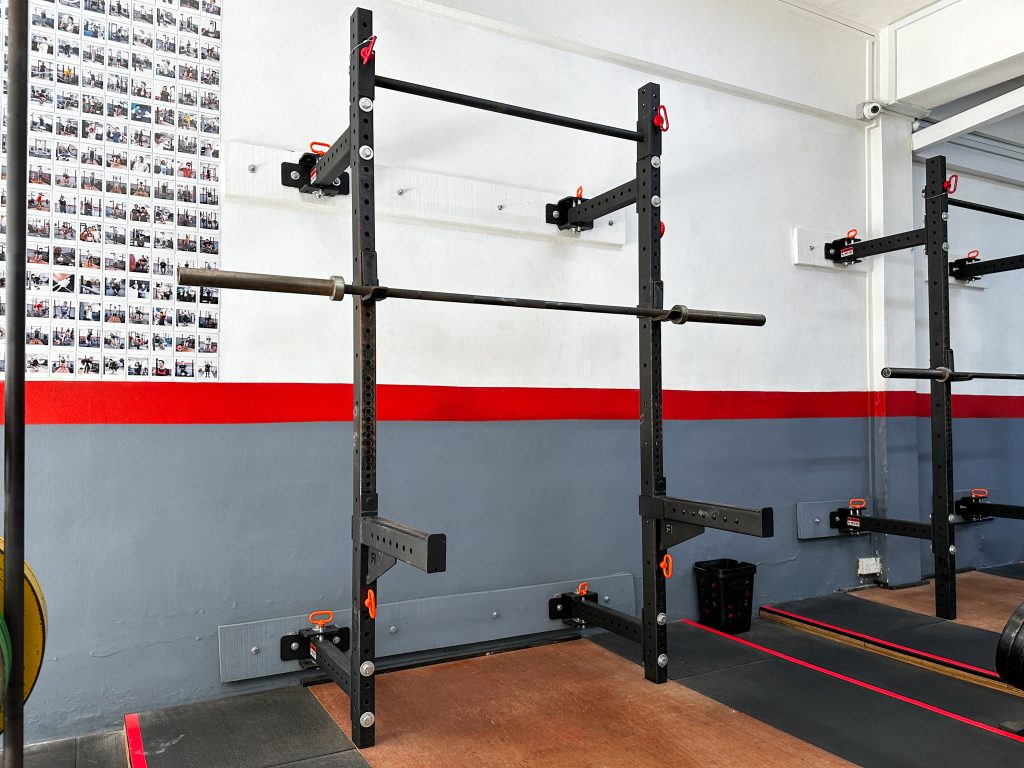
Do they have safety bars, and are they height-adjustable?
Safety bars with adjustable heights ARE A MUST. Always squat and bench with safety bars set to the appropriate height. Here’s how to adjust rack height and safeties for each lift. Avoid like hell any gym that doesn’t provide this basic safety equipment, and steer clear of non–adjustable safety bars.
Also, check if the gym is cool with you doing rack pulls or pin presses – it’ll be a plus if you can.
Are there spacings on the racks close or wide?
Ideally, you’d want the spacings to be close, so that you can finetune the appropriate height adjustment for yourself. For example, the Rogue R-3 rack in our gym has 2.5 cm spacings on the bench and rack pull area, and 5 cm spacings above and below.
If you have to use a rack that only has wide spacings and your appropriate rack height is between two spacings, always choose the lower option. Having to tiptoe or reach up to rack your bar back is a bad idea. It’s safer and easier to rack the bar back on a lower hook than a higher one, especially when you’re fatigued at the end of a heavy set.
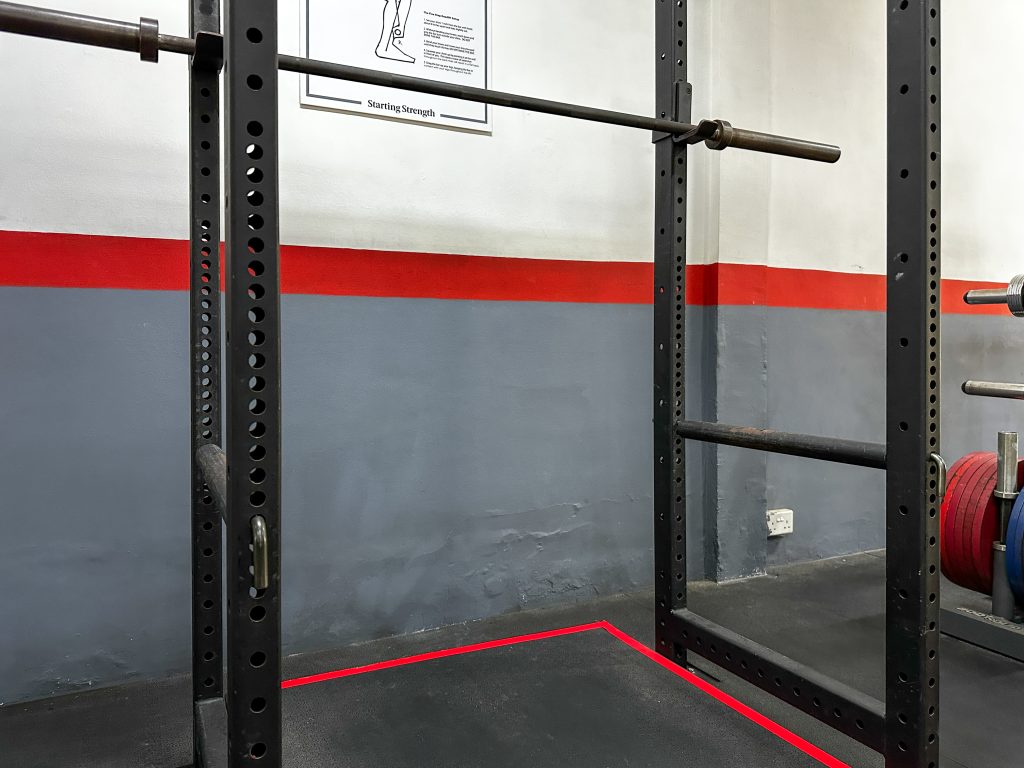
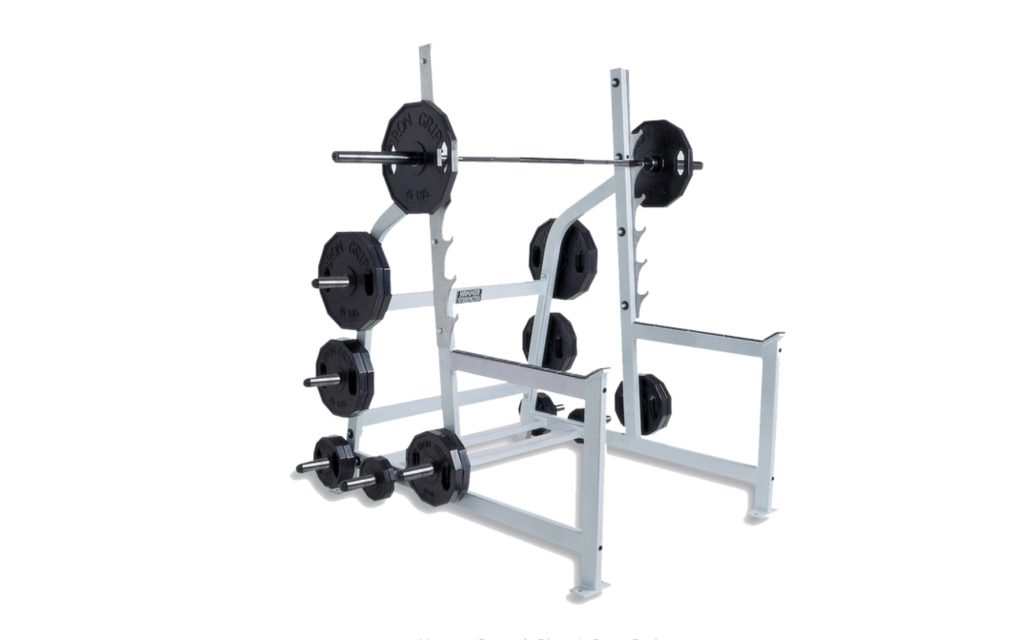
Are the racks located away from mirrors?
Ideally, we want to avoid lifting in racks that are in front of a mirror. When lifting, we want to utilise proprioception to self-correct any form errors rather than use visual feedback from a mirror.
If the racks are located in front of the mirror, check if it’s possible to use the other side of the rack so that your back is facing the mirror instead.
Barbells
Does the gym use quality barbells?
The barbell is the only interface between you and the weight, so a good barbell is very important. What kind of barbells does the gym provide? A tell-tale sign of a crappy bar is a hex bolt at the end of it. Don’t use crappy bars.

How’s the knurling on the bar? Does the bar have the standard grip markings?
How is the knurling on the bar? Does it feel non-existent and look more like it’s printed on, rather than machined onto the shaft? Or does it feel super sharp, like a cheese grater?
Does the barbell have a center knurl? While not entirely necessary, having a center knurl helps the bar to better grip on your back when you squat.
Does the grip markings and knurling have the correct spacing? I’ve noticed some online clients use noticeably narrower than usual grips. Only after they measured their barbells did we find out that the spacing of the knurling was not standard.
These lifters had previously trained in our gym and were used to setting up their grip according to the knurl. So they did the same thing when using other barbells, with the unfortunate result of a narrower grip. Non-standard knurling spacing is another indicator of crappy bars.
Are there lighter bars (that can still perform like standard bars)?
Does the gym have bars lighter than 20 kg? For some lifters, the 20 kg may be too heavy for them. Even if their working set is at 20 kgs, they’ll still need lighter bars to warm up. To accommodate all strength levels, we have a few 5 kg, 7.5 kg and 15 kg bars in our gym.
These bars have the same grip markings and knurling as the standard 20 kg bar, but have shorter sleeves, a smaller shaft diameter and are sometimes made of lighter materials. The main thing is that they can still accept the same plates and be used on a rack exactly like a 20 kg bar.
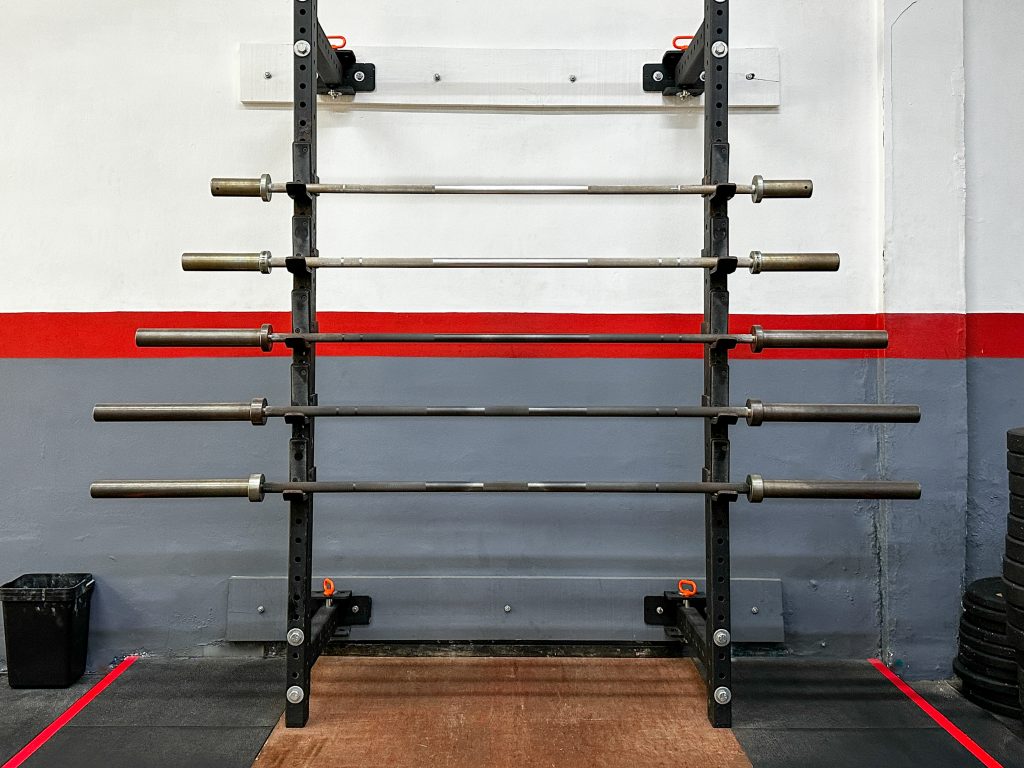
Most gyms won’t have these kinds of bars. If they do have lighter bars, it’s usually a fixed-weight bar. Apart from not being able to change the load on the bar unless you change the whole bar, these bars don’t usually fit onto the J hooks of the rack.
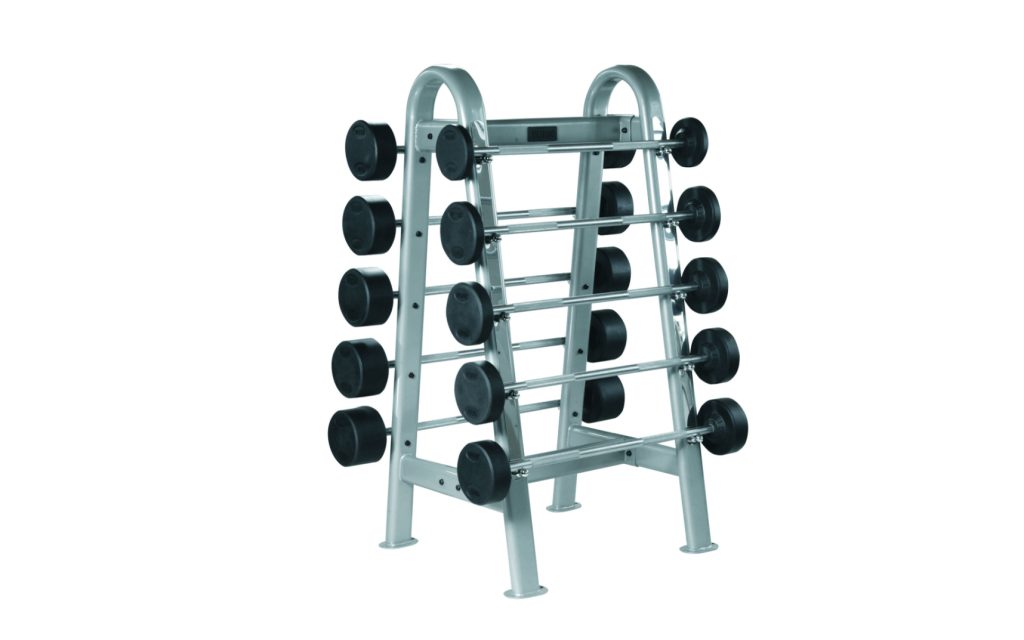
So if you’re a lifter who needs a bar lighter than 20 kg, ask if the gym has lighter bars.
Plates
Do they have calibrated steel plates?
Calibrated steel plates are actually nice to have, rather than a must-have. Calibrated bumper plates are also fine to use but will feel different from steel plates.
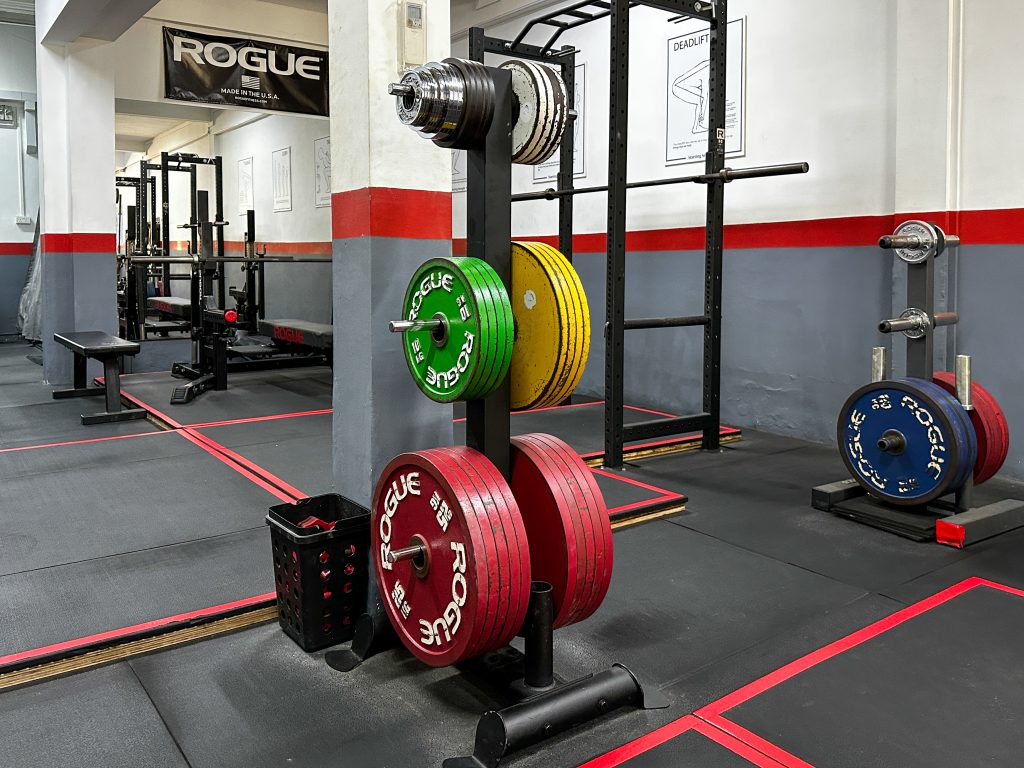
The problem with cheap non-calibrated plates is that the actual weight may differ from the stated weight. You can imagine the impact this has on your training – it screws up the total weight when you load your bar. Depending on the plates, it could be lighter or heavier than weight weight you want on the bar.
At Hygieia, we have some uncalibrated steel plates from the early days of our gym – we weighed them and found that the actual weight of the plates isn’t what is stated on them.
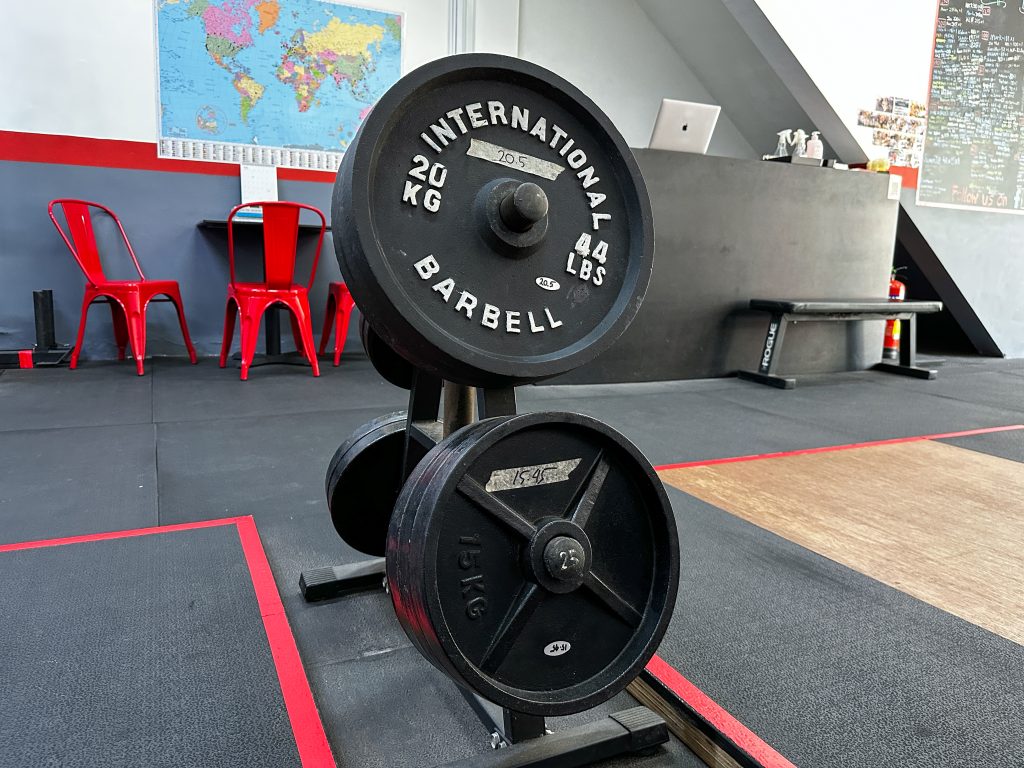
If you know that the plates are inaccurate, try as much as possible to always use the same plates (that you’ve already measured). This is so that you’re always correctly inaccurate, with the same delta every time.
Do they have both steel and bumper plates?
A gym with only steel plates might be an issue for beginners starting to deadlift. To have the bar at the appropriate height off the floor for the deadlift, the bar needs to be loaded with a plate with a 450 mm diameter.
But steel plates with a 450 mm diameter are only available from 20 kg. This means the minimum weight with a standard Olympic bar will be 60 kg (2 plates x 20 kg + 1 bar x 20 kg) and perhaps too much for a beginner. Yes, you could use a 5 kg bar but these lighter bars generally aren’t rated to be loaded with that much weight.
In this situation, having bumper plates will come in handy, as bumper plates have the same diameter regardless of weight. Do check if the gym has bumper plates if your deadlift is less than 60 kgs. If the gym only has steel plates, check if you’re able to rack pull and set it to the correct deadlift height.
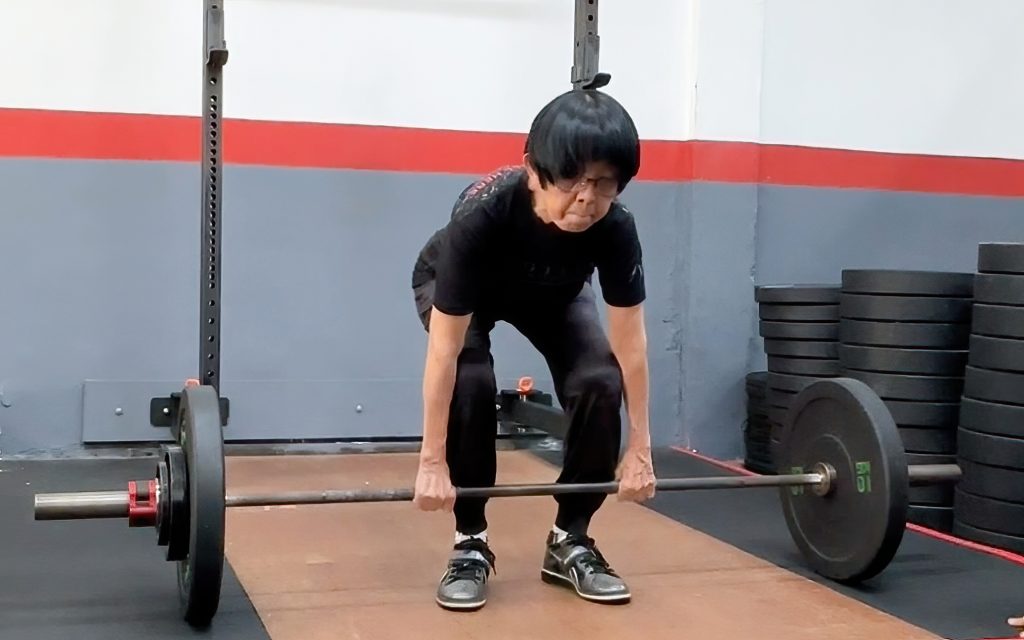
Oh, and hex plates suck. Avoid them like the plague. These plates are very hard to deadlift with. Unless you can put the plates back parallel to the floor on every rep (which is impossible), the bar will either roll away from or ram into your shins. It sucks, trust me.
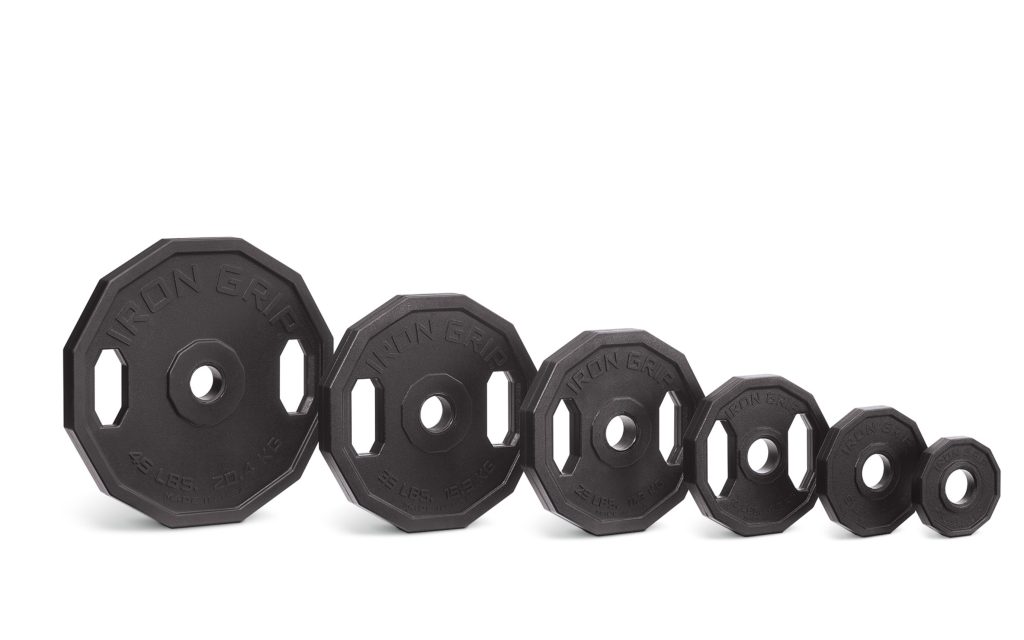
Do they have microplates?
Most gyms have plates that go down to at most 1.25 kg. This means that the minimum increment of weight on the bar is 2.5 kg, which could be too much of an increase for upper-body lifts like the press.
Microplates come in 1 kg, 0.75 kg, 0.5 kg and 0.25 kg, which means you can increase the weight on the bar by as little as 0.5 kg. If the gym doesn’t provide this (and most don’t unless it’s a specialised lifting gym), you can still easily get your own and pack whatever you need.
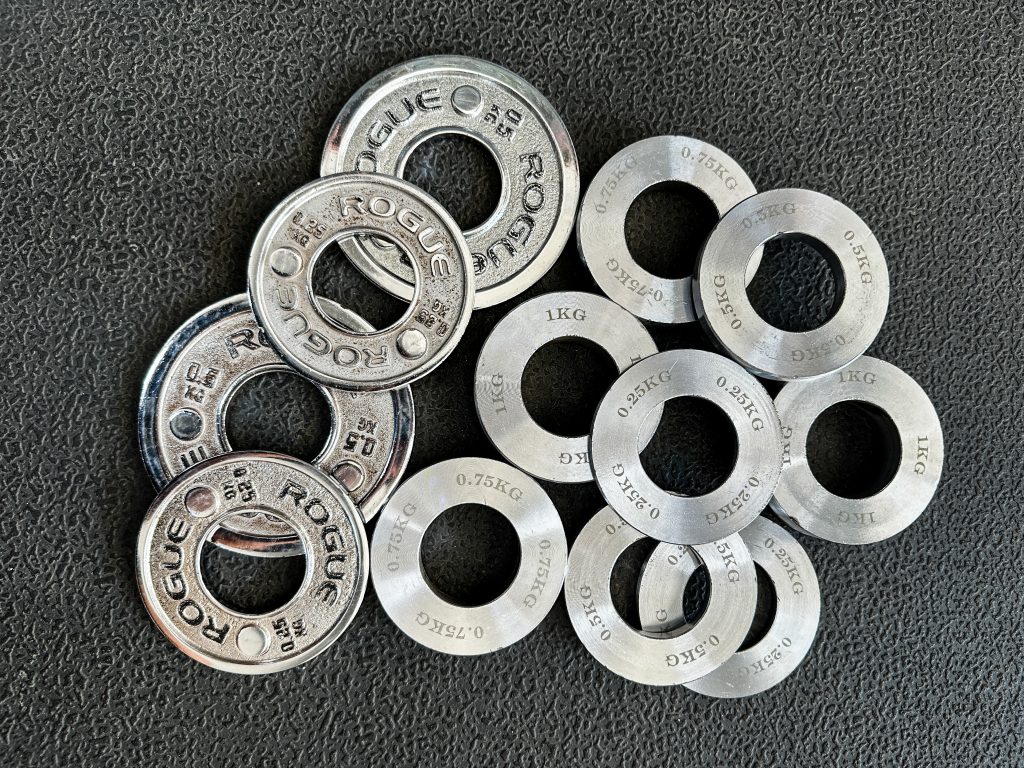
Barbell Collars
Does the gym have barbell collars?
Barbell collars prevent the plates from slipping and sliding about on the sleeve of the bar when you’re lifting. Collars should be used on all lifts except the bench.
Collars come in a variety of designs. As long as it’s tight enough to do its job and secure the plates, it’s good to go.
As an aside, while spring collars can also do the job, they’re a pain in the ass to use.
Bench
Do they have flat, non-adjustable benches?
Check out the benches, are they flat? Ideally, the bench should be a single piece, flat and without any curvature, so that you can get maximum support and grip when you bench.
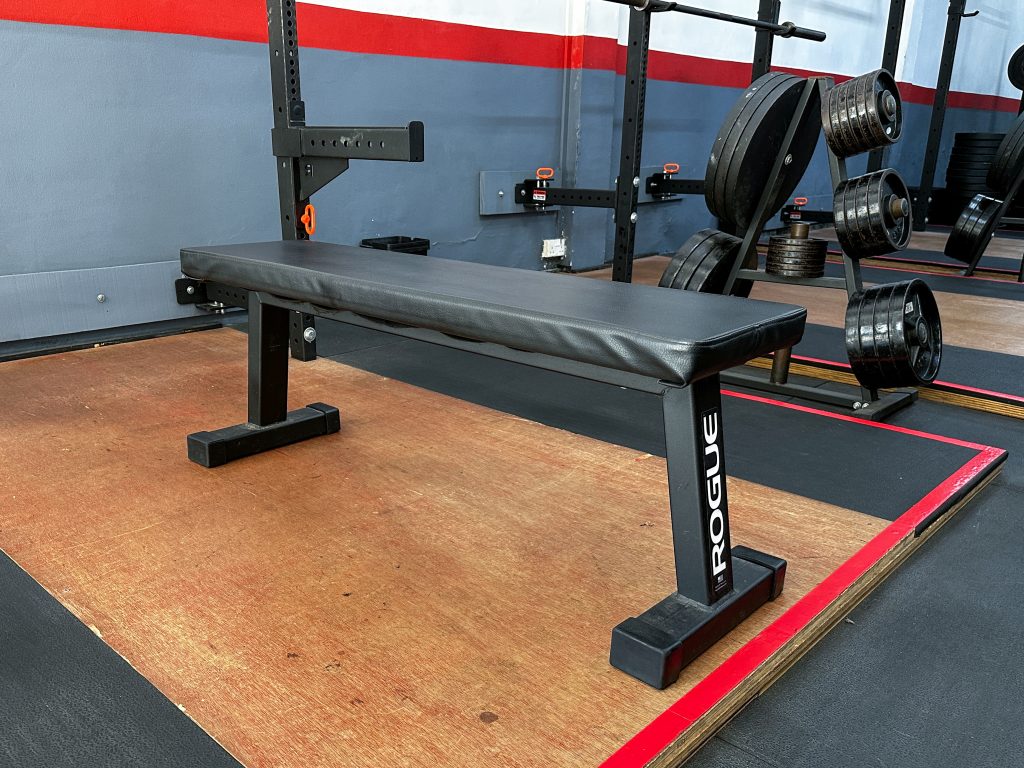
While adjustable benches can come in handy at times, the space gap should be as close as possible. Look for benches with minimal gaps over those will large gaps – your butt might get in between the large gap and it’s pretty annoying to bench on.
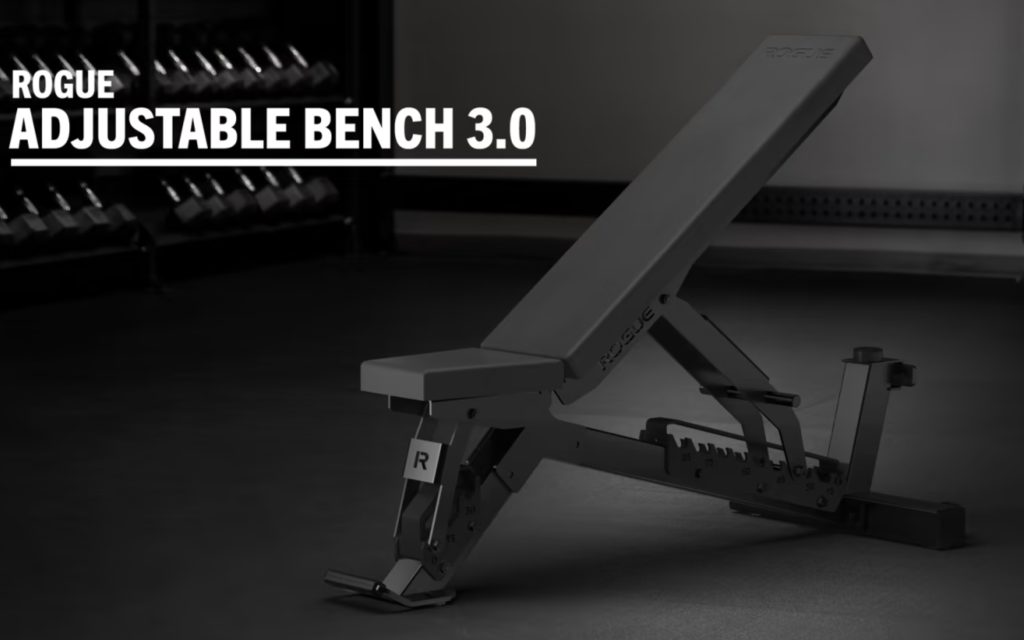
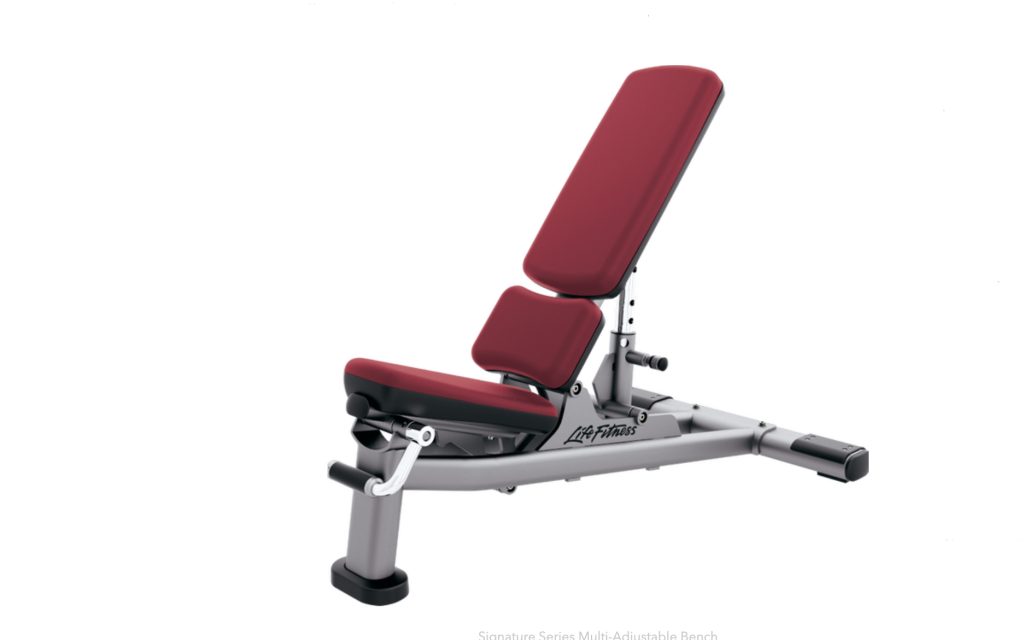
Chalk
Does the gym provide (or at least allow) chalk?
Chalk is a necessary part of barbell training – it helps to improve your grip when training with barbells, especially so when deadlifting. However, I’ve never seen chalk provided in a commercial gym. Some actually ban the use of chalk. I can understand where they’re coming from – inconsiderate people can make a mess and leave chalk all over the floor and bar.
If the gym doesn’t provide chalk, ask the staff if they allow the use of liquid chalk, which is simply chalk mixed with alcohol. Squirt some on your hands, wait for the alcohol to evaporate and you’ll end up with chalked hands. If they do allow liquid chalk, do the right thing and clean up after yourself. Don’t be the reason that they ban liquid chalk as well.
Gym Policies
Are they okay with “loud” deadlifts and Olympic lifts?
Gym etiquette aside, what’s the gym’s stance on a quick descent of the bar on the deadlift and doing the Olympic lifts?
Even though these lifts are meant to be lowered quickly, to some people it may look like “slamming the bar” as it does create a bit of noise. I’ve had clients tell me that they were not allowed to put the bar back down quickly even though they were deadlifting on a lifting platform. Putting it down slowly on a lifting platform is absolutely ridiculous – dropping the loaded bar on a lifting platform is the exact reason why such platforms were created.
Does the gym allow you to video yourself?
If you’re in the habit of video-ing your lifts to self-evaluate or show your online coach, do check with the gym if they allow it.
If they do, great – don’t be a nuisance. Set the tripod up only when you need it, and keep it out of the way when you don’t. Leaving it blocking the walkway for your entire session is a good way to make everyone dislike you.
Quality equipment makes a difference
While you can consider location, cost, crowd and culture in your choice of gym, these should be secondary to the above factors.
if you’re serious about barbell training, your gym should ideally have most, if not all, the above.
Can you still train properly if it doesn’t? Of course, you can. We’re just talking about the ideal scenario. Depending on how pedantic you are, there’s always some leeway for most of the items. But the absolute non-negotiables are the rack (always have adjustable safeties) and quality barbells (crappy bars suck).
Hygieia started as a gym providing high-quality coaching and training equipment focussed on getting older adults stronger. If you’d like to see for yourself what a proper barbell strength training gym looks like, you’re welcome to drop by to have a look.
Here’s a quick checklist you can download and refer to when checking out gyms.
